MIAMI—One of the best places to view contemporary art in Miami is the Rubell Family Collection where a 13-foot bronze sculpture of a monster-like man greets visitors as they enter. Gold-leaf ruins are strewn throughout the front gallery nearby. Tucked in a corner past the collection’s library, a female figure sits at a table in a plywood, room-sized box drenched with blue and orange paint.
The works, by Los Angeles-based Thomas Houseago, John Miller of New York, and Richard Jackson who lives and works in Sierra Madre, Calif., respectively, are part of “American Exuberance,” the collection’s current exhibit. The yearlong show explores America’s cultural, political and social climate through the work of 64 artists who are citizens or residents of the United States.

Above, “Untitled (Red Man),” 2008 (bronze) by Thomas Houseago. Top of page, “The Blue Room,” 2011 (fiberglass, steel, wood, Formica, urethane paint, acrylic paint, canvas, wig, motor, rubber and control panel) by Richard Jackson.
Founded by Donald and Mera Rubell in 1964, the Rubell collection is one of the largest, privately owned collections of contemporary art in the world. Housed in a 45,000 square foot building in Miami’s Wynwood Arts District since 1993, the art is accessible to the public by appointment.
During a layover in Miami, before heading to Cuba, Arts Observer stopped by the collection in early June, joining a tour of about a dozen people from various states. A young woman who had recently started at Rubell, gathered our admission fees and led us through the exhibit. She spoke with authority about each artist and their work, before leaving everyone to linger and explore the galleries at their own pace.
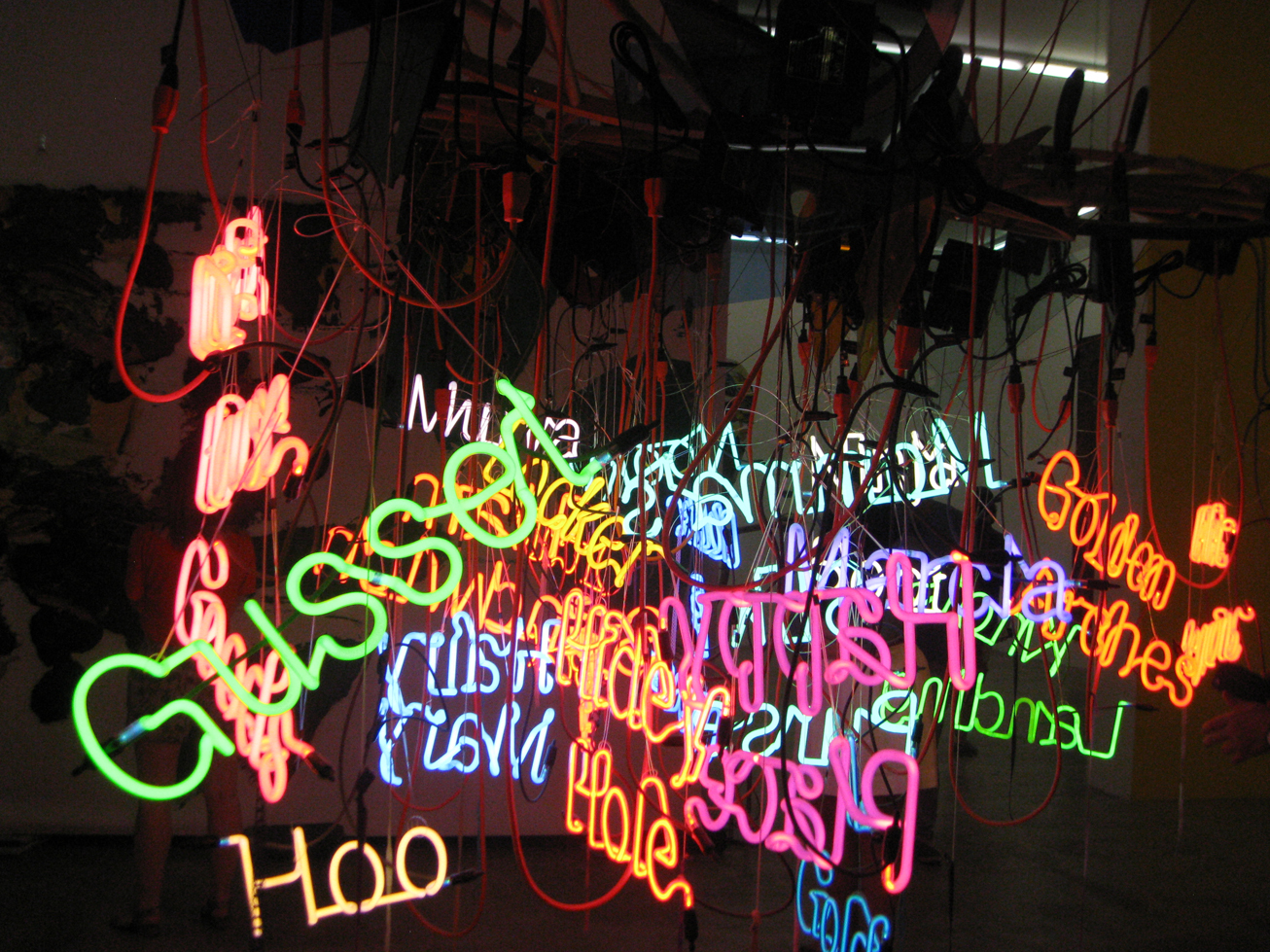
Two works of the same name: “Untitled (Chandelier),” 2004 (glass, wire, neon, Plexiglass, fabric and plastic).
On the first floor, two chandeliers of colorful neon words by Jason Rhoades look like a parties suspended from a couple of wagon wheels. The second floor galleries feature the majority of the exhibit. Large-scale installations by Kaari Upson and Cady Noland grace the spaces where innovative sculptures, paintings, photography and mixed-media works are also displayed.
On view since Nov. 30, 2011, the exhibit includes more than 190 works, 40 of them created in 2011 (including the Houseago figure, the Jackson space, and “After Medium” by Rashid Johnson) examine the state of the nation today. Earlier selections—by Keith Haring, Richard Prince and Cindy Sherman, among others—provide context to life in America.
While there was a feast of art on two floors, it was disappointing not too see Glenn Ligon’s neon “America” sign and “Untitled (Malcolm X),” a coloring book-inspired portrait of the black leader. The 2008 works were no longer on view because the collection is beginning to transition the galleries in preparation for its next exhibit. A series of lithographic posters of Elvis Presley, Marilyn Monroe and Mickey Mouse by Keith Haring and “Three Ball 50-50 Tank (Dr. J Silver Series), Jeff Koons’s installation of basketballs in a fish tank, also were not on view.
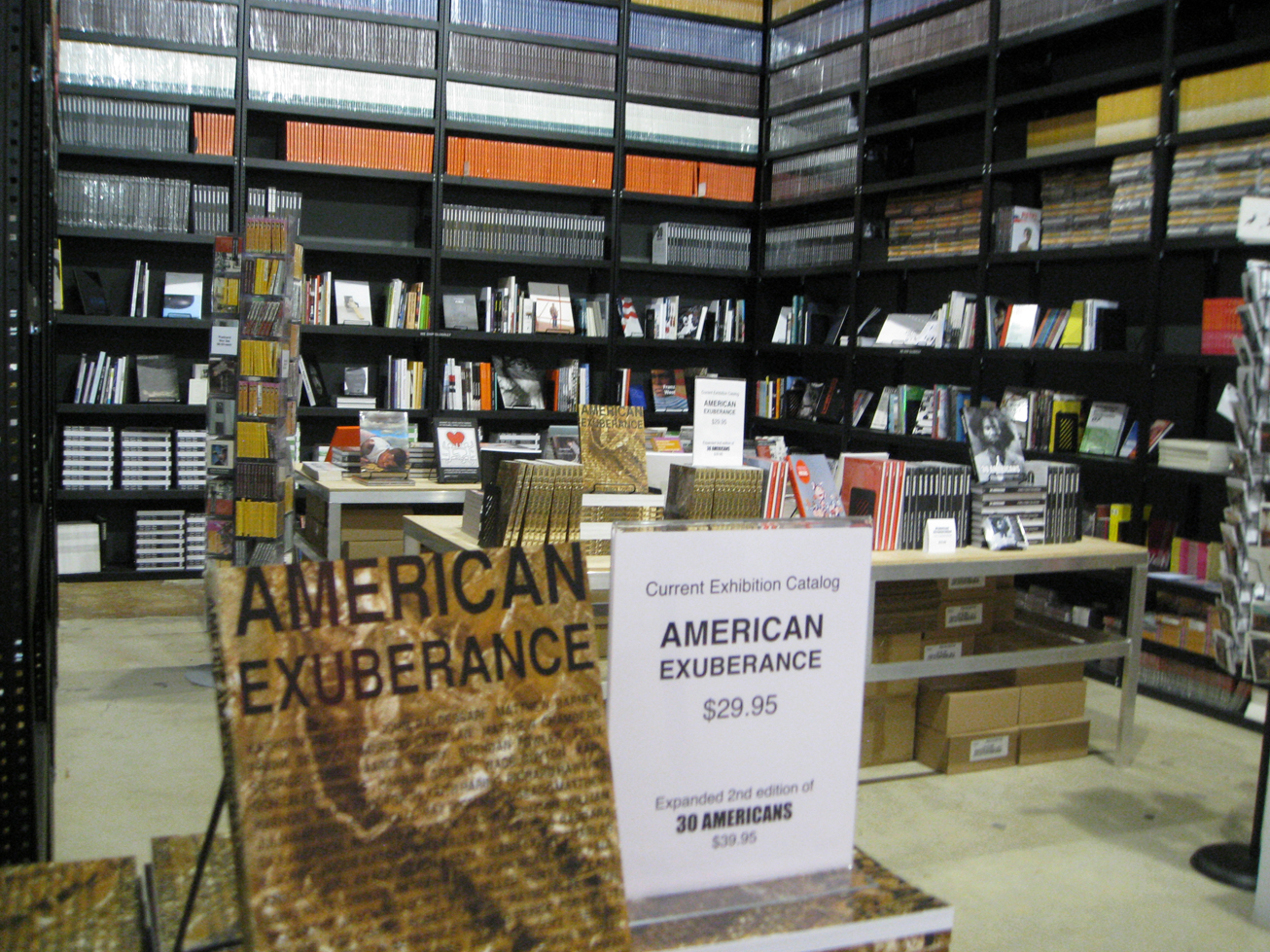
The Rubell Family Collection’s bookstore sells a range of titles including catalogs from its exhibits. “American Exuberence” is on view through July 27.
The Rubell Collection is dynamic, continuing to expand through purchases and donations and curating traveling exhibitions of its works. A substantial number of African American artists are represented in the collection and compose “30 Americans,” a touring exhibition of 75 works by 31 black artists that is currently at the Chrysler Museum of Art in Norfolk, Va., through July 15, 2012.
Back in Miami, “American Exuberance” is on view through July 27, 2012, with tours available on Wednesdays and Fridays at 2 p.m. The Rubell Collection will install a new exhibit, a survey of works from the collection, opening in time for Art Basel Miami at the end of the year.
View many more works from the “American Exuberance” exhibit here.
All photos by Arts Observer

“A Refusal to Accept Limits,” 2007 (imitation gold leaf on various materials including plastic objects, rope and plaster on fiberglass forms) by John Miller, with at right, “Everything is Said #14” and “Everything is Said #8,” both also by John Miller
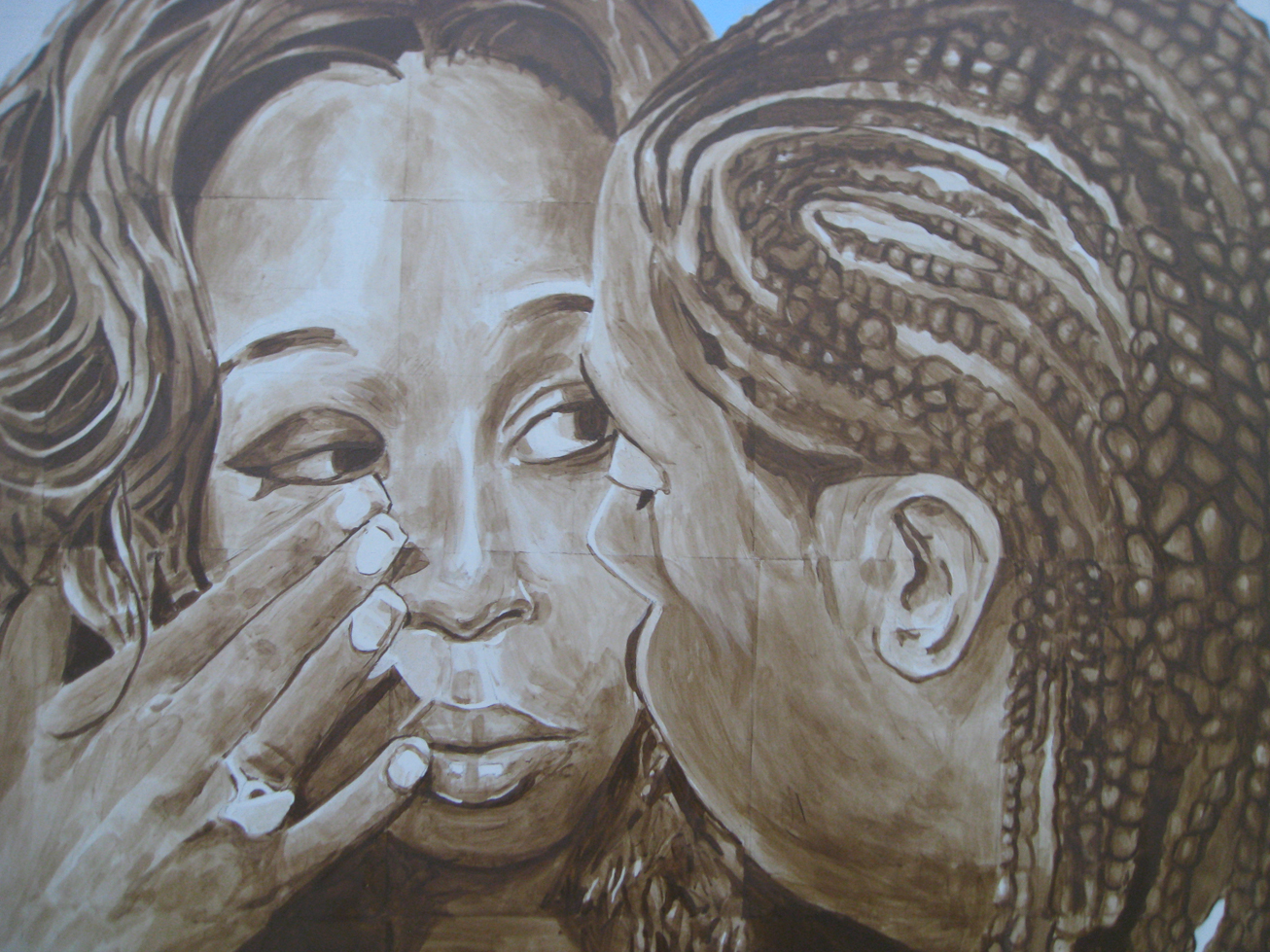
Detail of “Everything is Said #8,” 2009 (acrylic on canvas) by John Miller, is a painting of a still from a reality TV show.

“Chariot (The Day After the End of Days),” 2005-06 (Polish hay cart, scrap wood, T111 plywood, fluorescent lights with colored lenses, bronze, 20 state flags, wool, scorched wood, buttons, abalone shell, mother of pearl, Powell Peralta skateboard, bucket, purple resin, Black panther 10 point program and Stanton’s Declaration of Independence) by Matthew Day Jackson.
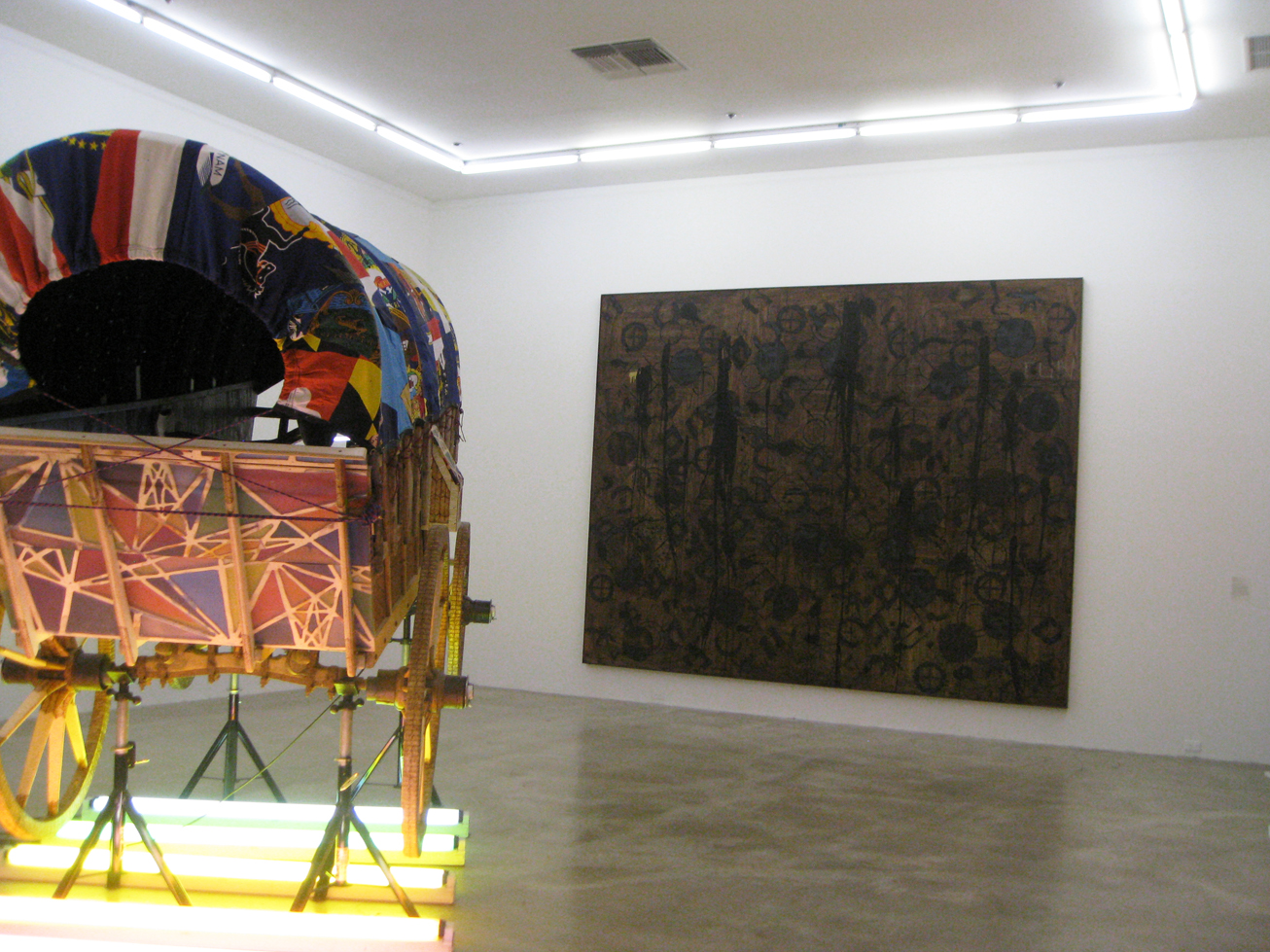
From left, “Chariot (The Day After the End of Days)” by Matthew Day Jackson and “After Medium,” 2011 (branded red oak flooring, black soap, wax and paint) by Rashid Johnson.
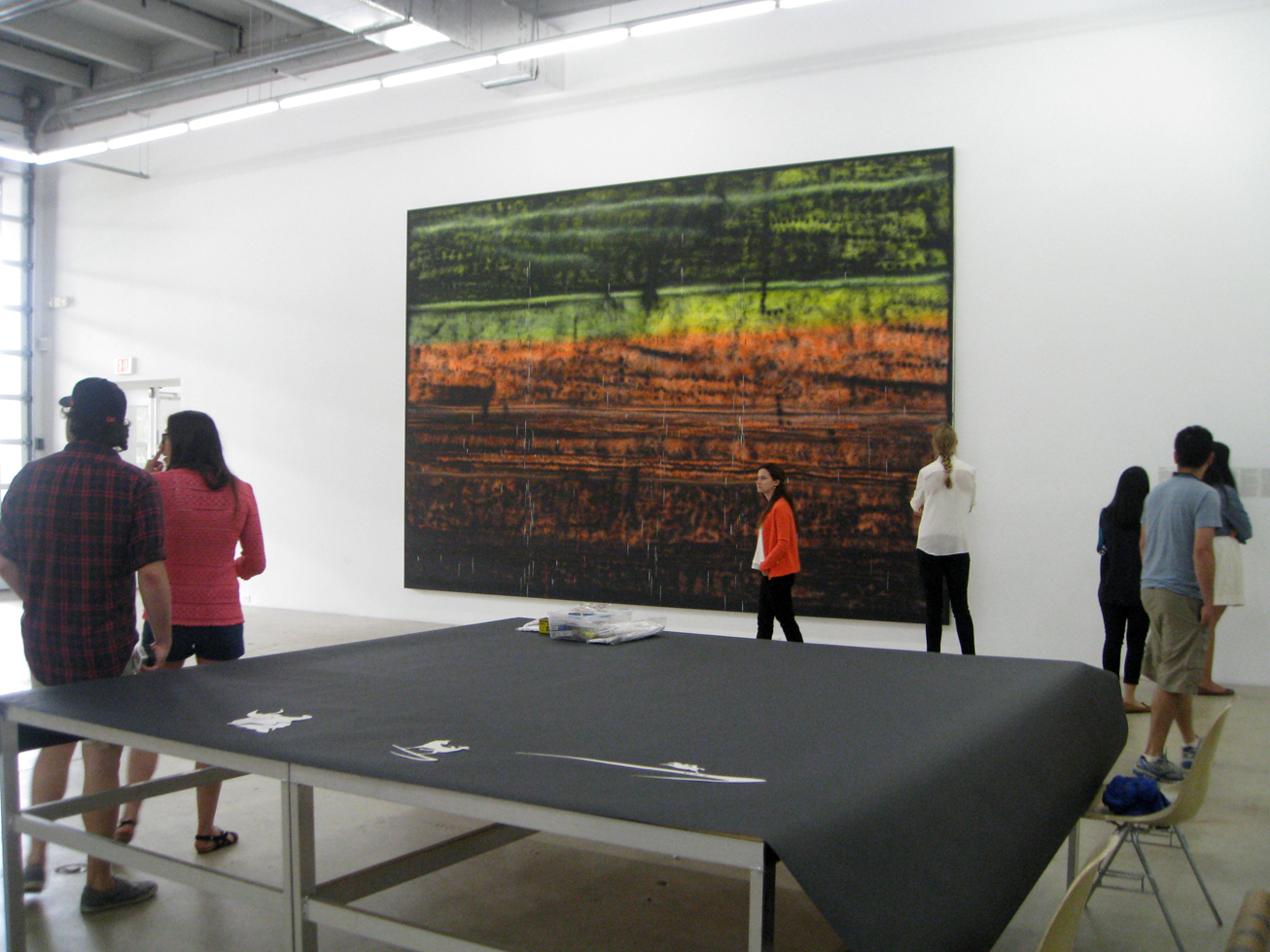
In background, “SP173,” 2011 (spray paint on canvas) by Sterling Ruby. Using the black paper and templates on the table, staff members were preparing to cut out “Camptown Ladies, a 1998 Kara Walker silhouette, for the collection’s next exhibit.
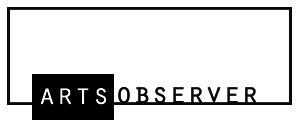

[…] Read more about the collection and view works exhibited on the first floor here. […]